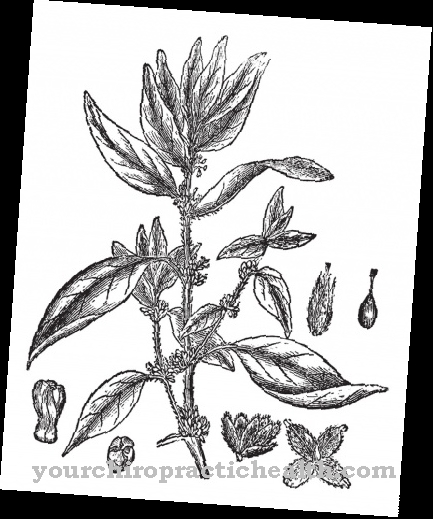The Holly grows to a few meters in Central Europe, but in milder regions the tree can grow up to 15 meters high. If you like it smaller, you can keep it lower by pruning it regularly. The thorns on the leaf margins explain the name.
Occurrence & cultivation of the holly

The Hollywhich can live up to 300 years, grows either as a shrub or tree with glossy, evergreen leaves that are ovoid. The white flowers have four petals and appear from May to June. The berries, which are a popular winter ornament, develop in autumn. They are initially green and later red. The holly can reproduce through the seeds contained in the berries. This requires neither a great deal of maintenance nor an elaborate procedure.
It is enough to put the berries in the ground. However, you must be mature for this purpose. However, it can take up to three years for a germ to sprout. The holly grows increasingly in beech and spruce forests and prefers moist and lime-poor soils. The location should be bright and rich in humus. Their natural distribution area is particularly southern and western Europe. The shrub is particularly popular in parks and gardens, for example as a border element, as a decorative solitary shrub and for underplanting trees.
Most species are dioecious. This means that it bears both female and male flowers. Several holly trees should be put together in groups so that the beautiful, bright red fruits can develop. In general, the plant is an undemanding and evergreen shrub with a rather loose habit, which, however, becomes opaque through regular pruning.
Effect & application
Due to its particularly high ornamental value, the holly is very popular as a decoration at Christmas time in flower arrangements and wreaths. Not only do the leaves look very interesting, but especially the red berries are beautiful to look at thanks to their bright color and provide variety. However, since the leaves and berries contain urolic acid and polyphenols, they should be used cautiously with children in the household.
The consumption of the berries and thus the toxins leads to vomiting, diarrhea and stomach and intestinal problems. The first symptoms can appear after just two berries. The amount of 30 berries can already be life threatening. The holly is also often used as a privacy protection plant. As an evergreen hedge, it is an attractive eye-catcher. The beautiful red berries and the colorfully bordered leaves set attractive focal points, which liven up the garden.
Since the holly grows slowly (10 to 20 centimeters per year), it is also suitable as a container plant. However, protective measures must be observed when caring for in winter. At this time of year they should be placed in the shade. In general, the winter damage to the frost-hard container plants is not caused by freezing through the root area, but by rapid freezing or thawing in the sun.
This creates tension in the tissue, causing the cell walls to tear. This causes the parts of the plant to die. The holly is also popular because it provides food for bees in summer and birds in winter. It is just as useful for the psyche, because it helps to become calmer and more balanced. Breathing becomes deeper and more even.
Importance for health, treatment & prevention
The holly is not without controversy as a remedy. The reason for this are the poisonous substances that are contained in the berries and leaves. Nevertheless, the plant is used homeopathically, because the plant is said to have several positive effects. In folk medicine, the holly is used against flu and febrile colds. It is supposed to lower the fever and relieve cramps. The holly is also used in folk medicine to relieve whooping cough.
But it shows excellent properties in all forms of cough. In herbal medicine, the holly is used internally and externally, for example against bronchitis and rheumatism. The shrub-like trees were also used in the past against gout and gastrointestinal problems. However, it is advisable never to experiment with the plant yourself. Ingestion can lead to vomiting, diarrhea, discomfort in the stomach and intestines and cardiac arrhythmias due to the toxic ingredients.
The holly is also used for a stitch. It generally has the following healing effects: It is cold-relieving, fever-reducing, antispasmodic, expectorant, bowel-regulating, diuretic, rheumatic-relieving and toning. Since the leaves contain less of the poisonous substances than the berries, only these are used to decoction, for example against feverish colds or the flu.
To make tea, the holly leaves are put into a cup of lukewarm water and covered overnight. The next day the tea is warmed up and filtered. One or two cups of this can be drunk a day. The boiled leaves are said not only to reduce fever, but also to have a diuretic effect.
Therefore, the holly also has a positive effect on gout, rheumatism and kidney stones, as well as jaundice and bumps. The leaves can also work when you are weak and tired. For this reason, they are suitable for various, generally strengthening tea blends.
























.jpg)



